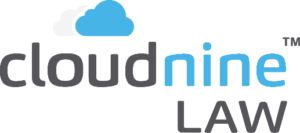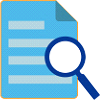The processing stage of eDiscovery is often overlooked or misunderstood, but it is a crucial step in the overall workflow. It involves various tasks such as data identification and collection, deduplication, file conversion, and indexing. These tasks can be complex and time consuming, but they are essential for organizing and preparing the data for the document review process.
Implementing effective workflow strategies and leveraging software to simplify data loads during eDiscovery processing is crucial for efficient and accurate document review. By simplifying and understanding the data before diving into review, you can ensure that relevant information is properly identified and reviewed while reducing the risk of overlooking critical evidence due to overwhelming amounts of data.
CloudNine LAW. Work smarter, not harder.
LAW On Prem: Reduce the cost of the discovery process with the most comprehensive processing, imaging, and production solution on the market
- Process eDiscovery In House: Maximize your control and cost certainty.
- Streamlined processing: With over 4,800 supported native file types, LAW. Automated OCR, content extraction and language identification can be applied to every document, to ready it for review.
- Scalability: Options to expand your environment vertically or horizontally to fit your organization’s needs.
- Custom Support: Complete custom project requirements with unmatched processing and native imaging flexibility.
- Versatility is Key: Processing, Imaging, Producing, Printing, Scanning, and Scripting. You name it, LAW can do it.
Ready to see how you can take your document review to the next level? Schedule a Demo today.
CloudNine LAW
Committed eDiscovery Teams Depend on LAW
Process EFFICIENCY
Streamline the discovery process with the most comprehensive processing, imaging and production solution on the market.
Increased PRODUCTIVITY
Your eDiscovery technology should do more than just automate processes – it needs to drive positive benefits in all aspects of your operation.
- Reduce eDiscovery spend
- Shorten the learning curve
- Lessen your IT burden
- Increase cash flow
- CloudNine LAW DELIVERS!
Your Journey to Find the Right
eDiscovery Application Starts Here:

TRUSTED
TRUSTED
To help legal professionals meet increasing discovery demands.

PROVEN
PROVEN
To control costs and achieve positive ROI.

VERIFIED
VERIFIED
To maximize user and project efficiency from start to finish.
WHAT CLIENTS SAY ABOUT CLOUDNINE LAW
For 20 years Reliable has trusted and depended on LAW to form the backbone of our document imaging and eDiscovery processes. Built from the ground-up, with the features and flexibility we needed to handle a wide variety of workflows, the product has stood the test of time and is as relevant today as when it was first released. Many other applications have come and gone, but CloudNine LAW remains integral to Reliable’s continued success.
We’ve been seeing a high volume of data reduction from the software, sometimes in the range of 80 to 90 percent on our initial data … The product simply works!
CloudNine LAW paid for itself in just 30 days of use and allowed us to generate new revenue for the firm throughout the past year.
WHAT CLIENTS SAY ABOUT CLOUDNINE LAW
![]()
“CloudNine LAW Fits Right In”
We have invested in risk-averse technology and infrastructure and CloudNine LAW fits right in. At the end-of-the-day, we know CloudNine and LAW will be there for us.
John Kapp, Manager – Practice Support and E-Discovery
Shearman & Sterling LLP
![]()
“Backbone of our document imaging and eDiscovery processes”
For 20 years Reliable has trusted and depended on LAW to form the backbone of our document imaging and eDiscovery processes. Built from the ground-up, with the features and flexibility we needed to handle a wide variety of workflows, the product has stood the test of time and is as relevant today as when it was first released. Many other applications have come and gone, but CloudNine LAW remains integral to Reliable’s continued success.
Rich Mocarski
Director of eDiscovery & Hosted Services
Reliable Companies
![]()
“Exceptional Value”
CloudNine LAW paid for itself in just 30 days of use and allowed us to generate new revenue for the firm throughout the past year.
Phil Iantosca
Litigation Support Manager
Murphy & King
More Info:
Find out how the Beasley Allen law firm saved over $100,000 using CloudNine LAW.
Learn how to process and produce discovery data reliably and confidently with CloudNine LAW.
Learn how BDO used CloudNine LAW and Explore to reduce data and expedite their workflow.
Smart Business Solutions for Better Client Support:

Law Firms
Law Firms
Enabling litigation teams with the power to process, filter and cull non-responsive ESI. Create productions with industry leading image quality.

Corporations
Corporations
Empowering legal departments to control caseload, work more efficiently, reduce litigation budgets and meet internal client deadlines.

Service Providers
Service Providers
Expanding the portfolio of services, our qualified and approved partners enrich their business value and technology competitiveness.
CloudNine LAW:
Purpose-Built for eDiscovery Professionals

CloudNine LAW - Above and Beyond:
Integrate across CloudNine and other eDiscovery applications
Move data seamlessly between CloudNine, Explore™, LAW and Concordance® as well as other leading document review platforms in a wide range of formats.
Work with nearly every file format
Identify and extract content from over 4,500+ file types, scan documents from 100+ scanners, and produce to printed or digital output.
Experience unprecedented processing speed
Handle even the most extensive endorsing, OCR, or print jobs by adding just a few additional workstations.
Meet varied production requirements
CloudNine LAW is the eDiscovery industry leader with the most flexible processing imaging and endorsing capabilities.
CloudNine LAW Product Highlights:
Organize and Manage Imports
- Label Turbo Import datasets to organize for additional processing.
- Configure and control ascending/descending date sorting.
Image Handling
- Scan and import raw images into Turbo Import cases and replace image load files.
Source Management
- Quickly sort, filter, and delete imported sources in a user-friendly staging interface. Leverage advanced Date Filtering and automatic Date Sorting on import.
Modern Certification and Compliance
- 64-bit Office deployment to ensure compliance.
- Process with FIPS OS encryption to comply with baseline security configurations that NIST calls STIG. LAW is certified for compliance under NIST 800-53 Rev4.
- Run LAW on systems where only TLS 1.2 has been enabled. Certification for Microsoft Server 2019.
Visit our Answer Center for CloudNine LAW to see the latest Release Notes, learn more about System Requirements, Licensing Information, Installation Instructions, and using CloudNine LAW.
FAQs:
eDiscovery data processing is a process in which electronic documents are identified, collected, and prepared for review during the litigation process. It is an essential part of any eDiscovery project as this processing phase helps to ensure that relevant information can be found quickly and accurately. The goal of eDiscovery data processing is to streamline the entire eDiscovery process by providing a fast, efficient way to locate and filter relevant data to feed review platforms and initiatives.
The first step of eDiscovery data processing is identifying the relevant documents that may be used as evidence in a case. This can involve searching for specific file types, usually in their native file format, such as emails, spreadsheets, database files, short message files, voice recordings, images, video files, and more. Once these documents have been identified, they must then be collected from various sources and converted into a format that can be searched and reviewed.
The next step of eDiscovery data processing is to filter and remove any duplicate files or irrelevant documents (anything with non-pertinent information). This is known as culling. Typically culling techniques include filtering out documents based on specific time frames, removing identical documents (deduplication), removing irrelevant system files (deNISTing), and filtering on specific topics, search terms or key words.
The goal of this process is to reduce the number of documents that must be reviewed while still ensuring that all relevant documents are included. This can be done using software, like CloudNine LAW, or a manual review process. Software can quickly identify and discard redundant data, while a manual review may be used to ensure that all relevant documents are included in the searchable database. (Note that machine learning and artificial intelligence are also evolving for application in this area.) Once all relevant documents are included, they can be further examined for any keywords or patterns that may help to strengthen the case.
Finally, eDiscovery data processing is used to prepare the collected documents for review. This involves loading each document with specific metadata such as date of creation and file type. This allows attorneys and other legal professionals to quickly load files and navigate through a large volume of electronic files and documents without having to manually search each one.
eDiscovery data processing is an essential part of any eDiscovery project, as it helps to ensure that relevant documents are quickly and accurately identified and collected. Software and manual review processes can help to further filter out irrelevant information, while the metadata tagging process aids in navigation during the review stage.







